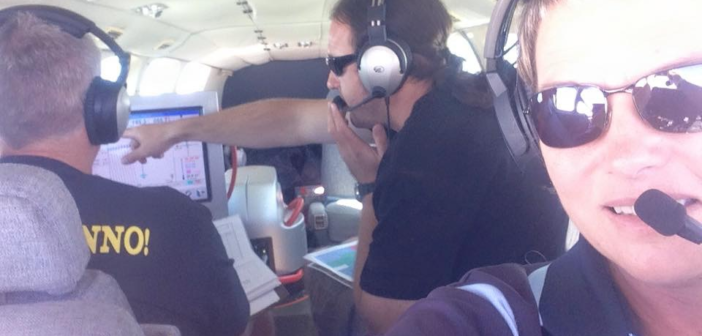The shape of smart change comes not only in several forms and shapes, but it also has many faces.
Smart change is also achieved by women closing the gap between what is and what should be.
The International Women’s Day marks a call to action to celebrate and recognise women across the world that are shaping progress to be the change they want to see.
Tammy Augostin, a survey pilot, has managed to break the barriers of two men dominated industries: the aviation industry and the surveyor industry.
The International Society of Women Airline Pilots (IPA) estimates that women pilots account for over 3% of pilots worldwide. Likewise, women in surveying account for 13% of Global Chartered Surveyors, according to RICS statistics on Women in Surveying.
 Tammy is an experienced survey pilot at PanAir, a regionally based company in New South Wales, Australia. Along a charter and maintenance operations, PanAir specialises in aerial survey operations with two aircraft on call 7 days a week.
Tammy is an experienced survey pilot at PanAir, a regionally based company in New South Wales, Australia. Along a charter and maintenance operations, PanAir specialises in aerial survey operations with two aircraft on call 7 days a week.
Being a survey pilot is no easy task- survey pilots operate flights under challenging conditions like bad weather, turbulence, and density altitude. Tammy Augostin, has the excellent planning and precision skills that flying a mutli-engine aircraft for LiDAR survey requires. She flies an aircraft that operates with the Leica ALS80 and the Leica ALS50 for Land and Property Information (LPI).
To celebrate and recognise International Women’s Day 2017 we asked Tammy to share with us her experience being a female survey pilot:
How did you started in this career path and for how long you have been flying?
I have always had an interest in aviation from a young age, my first flight in an airplane was at the age of 4 years old and I obtained my pilot license in 2008. I have been working in aerial survey operations for Land and Property Information (LPI) operating the survey aircraft with PanAir since 2014.


How did you become a survey pilot?
Initially it was never my plan to fly survey as I never felt my skills were good enough, but I was given the opportunity to learn about the operations and I started to really enjoy the challenges of flying this type of operation.
What do you enjoy the most about being a survey pilot?
I enjoy flying the survey because it is a very challenging role, which includes long hours, unfavourable weather conditions and sometimes isolated regional outback locations.
Can you describe the challenges involved in flying an aircraft that operates a LiDAR?
A survey pilot using LiDAR equipment has to fly within the flight between 5,000 to 12,000 feet to capture the perfect survey images. This aircraft is not pressurized so if we have to operate at levels above 10,000ft the pilot and crew must have oxygen equipment during the entire flight.
During a survey operation, a pilot has to has to flight between very tight tolerance and tracking parameters despite the challenging weather conditions. These parameters may sound easy, but when you are flying at lower levels, turbulence and wind can play havoc with your aircraft, meaning that you are constantly fighting to keep the aircraft on the designated track within the parameters.

During the survey operation, the pilot is also responsible for the safe navigation and operational requirements of the aircraft being flown, along with maintaining the height, speed and tracking parameters of the survey which is set out by the survey operators.
What does it mean to you to be one of the very few female survey pilots?
Women make up a very small percentage globally. Recognising that women are also doing roles that are normally male dominated such as survey operator and survey pilot will certainly show younger people that this type of role can be suitable for them. Creating role models for future generations is very important to ensure that our industry continues to grow.
To learn more about a day in the life a survey pilot click here.
To learn more about International Women’s Day click here.

By Renata Barradas, Communications Manager at Hexagon Geosystems














